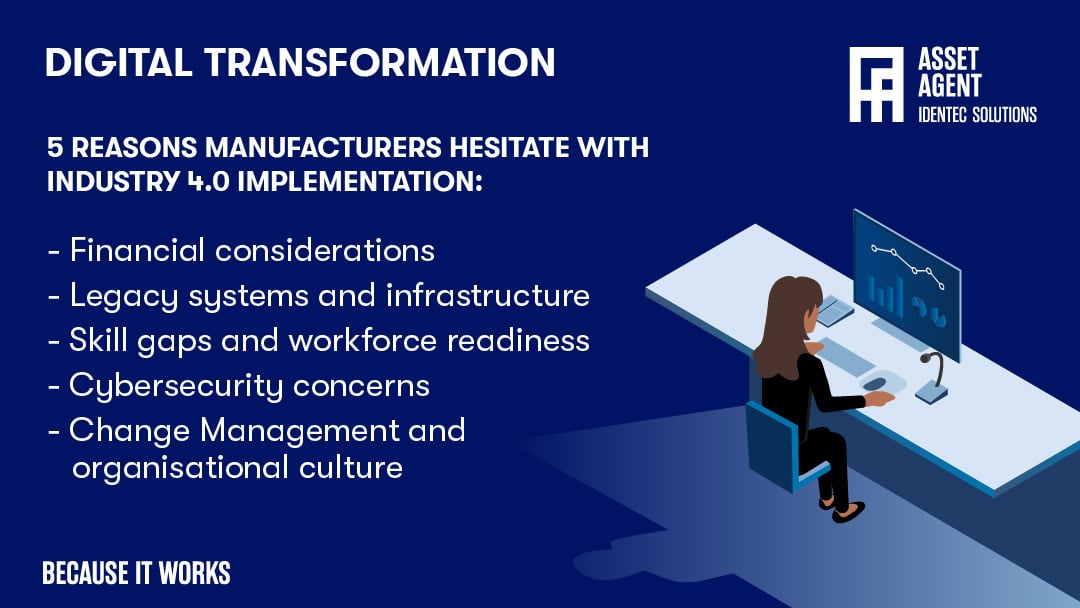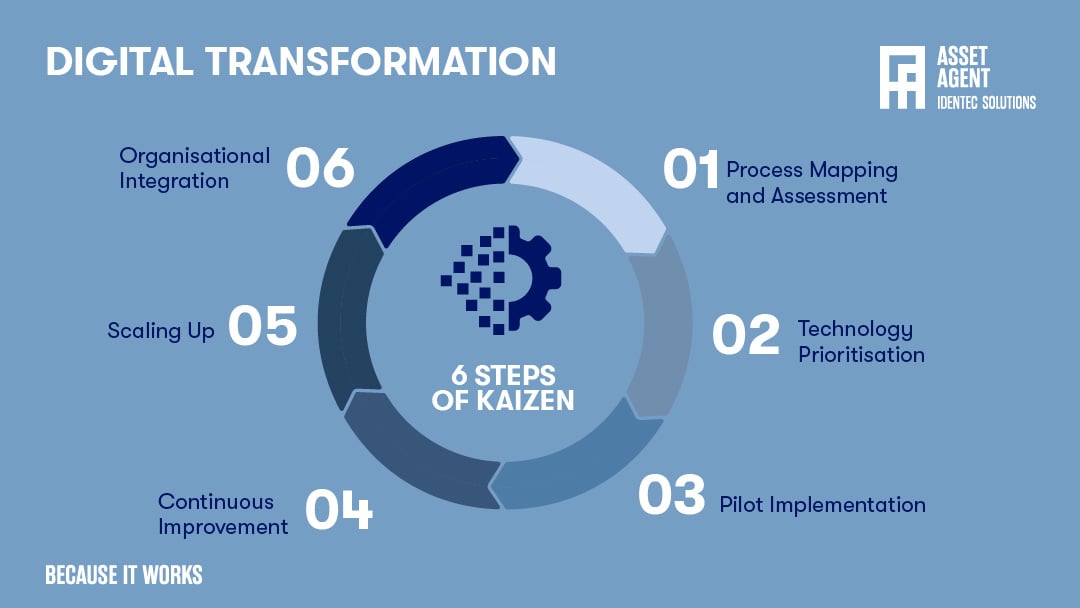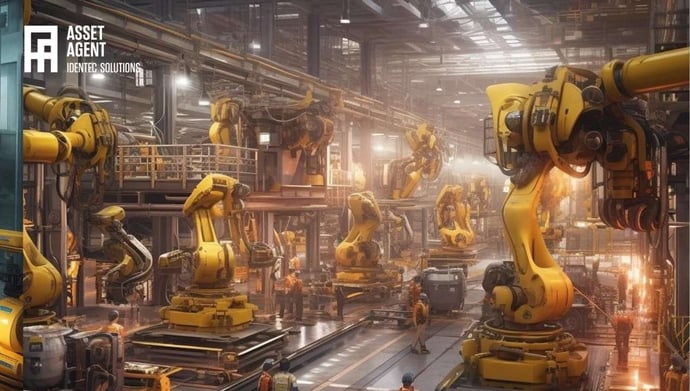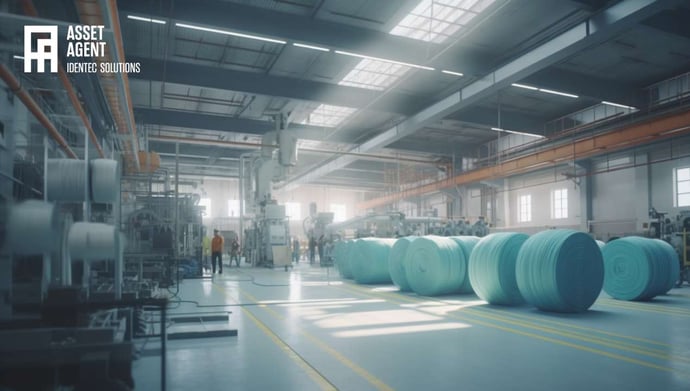Digital Transformation for manufacturing: The Micro-Kaizen Approach
| Written by Mark Buzinkay
In today's fast-paced and interconnected world, the digital transformation of companies has become a critical strategic imperative for organisations across various industries.
However, the digital transformation journey has challenges. Organisations must overcome legacy systems, adapt to cultural changes, and invest in employee reskilling and upskilling programs to fully harness the benefits of digital technologies.
Continue reading the full article to learn how the micro-Kaizen approach can help manufacturers overcome the challenges of digital transformation in the manufacturing sector and discover a step-by-step Kaizen approach for introducing digital technologies in brownfield plants in the automotive manufacturing industry. Embrace the power of digital transformation and revolutionize your industry one step at a time.

No video selected
Select a video type in the sidebar.
Digital Transformation in today's manufacturing
In today's fast-paced and interconnected world, the digital transformation of companies has become a critical strategic imperative for organisations across various industries (read more about the Digital Transformation Era here). Driven by technological advancements, this wave of change is reshaping how businesses operate, compete, and interact with customers. From automation and artificial intelligence to data analytics and cloud computing, the digital revolution is revolutionising global industries, offering unprecedented opportunities and challenges.
But what exactly does the term "digital transformation" mean? In its essence, digital transformation refers to integrating digital technologies into all aspects of a business, resulting in fundamental changes in how it operates and delivers value to customers. It involves leveraging the power of emerging technologies to enhance operational efficiency, improve customer experiences, and foster innovation.
One of the most notable effects of digital transformation is the increased efficiency and automation it brings to various business processes. Companies harness robotic process automation (RPA) technologies to streamline repetitive and time-consuming tasks, freeing employees to focus on higher-value activities. Automation improves productivity, reduces costs, and minimises errors, leading to significant gains in operational efficiency.
Moreover, data-driven decision-making has emerged as a key aspect of digital transformation. Organisations now have access to vast amounts of data, and with the help of advanced analytics tools and techniques, they can extract valuable insights to inform their strategic decisions. By leveraging data analytics, companies can gain a deeper understanding of their customers, anticipate market trends, personalise offerings, and optimise supply chains, ultimately gaining a competitive edge.
The advent of cloud computing has also played a pivotal role in enabling digital transformation. Cloud-based services provide scalable and cost-effective infrastructure, empowering companies to access computing power, storage, and software on demand. This flexibility allows businesses to scale rapidly, adopt new technologies more easily, and collaborate seamlessly across geographies.
Artificial intelligence (AI) and machine learning (ML) further propel the digital transformation wave. AI-driven technologies, including natural language processing and computer vision, revolutionise customer service, enable personalised recommendations, and automate complex tasks. ML algorithms, on the other hand, are being used to uncover patterns in large datasets, enabling predictive modelling, fraud detection, and proactive maintenance in industries such as finance, healthcare, and manufacturing.
The global impact of digital transformation is substantial, transcending industry boundaries. In manufacturing, for instance, adopting advanced robotics and smart factories has led to increased productivity, improved product quality, and more efficient supply chains. The healthcare sector is witnessing the integration of telemedicine, remote patient monitoring, and AI-assisted diagnostics, enhancing patient care and accessibility. Retail companies leverage e-commerce platforms, data analytics, and personalised marketing to provide seamless shopping experiences and stay competitive in the digital era.
However, there are digital transformation challenges along the journey (learn more about digital transformation stages). Organisations must overcome legacy systems, adapt to cultural changes, and invest in employee reskilling and upskilling programs to fully harness the benefits of digital technologies. Cybersecurity and data privacy concerns also demand rigorous measures to protect sensitive information and maintain customer trust.

Digital Transformation as state-of-the-art
In the era of Industry 4.0, state-of-the-art digital technologies are rapidly transforming how companies operate and produce goods. Powered by advancements in artificial intelligence, robotics, the Internet of Things (IoT), and data analytics, these innovations are driving unprecedented levels of automation, efficiency, and flexibility across industries. Let's explore a few typical technologies that are revolutionising the workplace and shaping the future of production.
Internet of Things (IoT) and Industrial Internet of Things (IIoT)
At the heart of Industry 4.0 lies the concept of interconnectedness through IoT and IIoT. IoT refers to the network of physical objects embedded with sensors, software, and connectivity, enabling them to collect and exchange data. In an industrial setting, this connectivity gives rise to IIoT, where machines, sensors, and devices are interconnected, forming a smart and responsive ecosystem.
Integrating IoT and IIoT allows companies to monitor and control operations in real-time, leading to increased efficiency and predictive maintenance. Sensors placed on machinery and equipment provide valuable data on performance, enabling proactive maintenance and minimising downtime. Additionally, IoT-enabled devices facilitate the collection of vast amounts of data, which, when analysed, provides valuable insights for optimising production processes, reducing waste, and enhancing overall productivity.
Artificial Intelligence (AI) and Machine Learning (ML)
AI and ML technologies have reached new heights in Industry 4.0, enabling machines to perform complex tasks that were once exclusive to human capabilities. AI encompasses a range of technologies, including natural language processing, computer vision, and cognitive computing, that enable machines to mimic human intelligence and decision-making.
In the manufacturing sector, AI-powered robots and cobots (collaborative robots) work alongside human workers, automating repetitive and physically demanding tasks. These robots can adapt to changing circumstances and learn from their environment, enhancing productivity and workplace safety.
Machine learning algorithms, a subset of AI, analyse vast datasets to identify patterns and make accurate predictions. In manufacturing, ML algorithms optimise production processes by predicting maintenance needs, ensuring timely component replacement and reducing unplanned downtime. AI and ML also play crucial roles in quality control, anomaly detection, and supply chain optimisation.
Additive Manufacturing (3D Printing)
Additive Manufacturing, commonly known as 3D printing, is a revolutionary technology that enables the creation of three-dimensional objects by layering materials based on digital designs. While 3D printing has existed for several years, recent advancements have expanded its applications in industrial settings.
Additive Manufacturing offers numerous benefits, such as rapid prototyping, customisation, and on-demand production. It allows companies to produce complex and customised parts with reduced material waste, lower costs, and shorter lead times. This technology is precious in sectors like aerospace, automotive, and healthcare, where intricate and customised components are required.
Augmented Reality (AR) and Virtual Reality (VR)
AR and VR technologies are blurring the boundaries between the physical and digital worlds, offering immersive experiences and new possibilities in training, design, and collaboration.
AR overlays digital information onto the real world, enabling technicians and operators to access real-time data, instructions, and troubleshooting guides through wearable devices like smart glasses. This technology enhances worker efficiency, reduces errors, and facilitates remote assistance.
Conversely, VR creates a simulated environment that users can interact with, offering virtual training, design prototyping, and virtual walkthroughs. VR-based simulations provide a risk-free environment for learning and experimentation, enabling companies to enhance employee skills and improve product development processes.
The abovementioned technologies represent just a glimpse into the vast array of innovations shaping the Industry 4.0 landscape. By leveraging these cutting-edge technologies, companies can unlock new levels of productivity, efficiency, and flexibility, propelling them into the future of work and production.
Why Manufacturers Hesitate to implement industry 4.0?
In an era defined by rapid technological advancements, the concept of Industry 4.0 holds immense promise for manufacturers seeking to enhance productivity, efficiency, and competitiveness. However, despite the proven benefits of digital transformation technologies, many organisations hesitate to embrace Industry 4.0 fully. Delving into the reasons behind this reluctance uncovers a complex web of challenges that impede the necessary technological leap. Let us explore the key factors contributing to manufacturers' hesitation in adopting Industry 4.0 technologies.
Financial Considerations
One of the primary reasons manufacturers hesitate to embrace Industry 4.0 technologies is the substantial financial investment required. Implementing digital transformation solutions entails the cost of acquiring new technologies and the expense of infrastructure upgrades, training, and integration with existing systems. Smaller companies, in particular, may need more money to make the necessary investments, leading to hesitation in taking the technological leap.
Legacy Systems and Infrastructure
Many manufacturing organisations operate with legacy systems and infrastructure that need to be designed to accommodate the demands of Industry 4.0. Retrofitting existing systems to integrate new technologies can be complex and challenging. The need for interoperability between legacy systems and emerging technologies may lead to compatibility issues, making organisations hesitant to undertake the necessary upgrades due to concerns about operational disruptions and potential downtime.
Skill Gaps and Workforce Readiness
The successful implementation of Industry 4.0 technologies requires a skilled workforce capable of leveraging these new tools effectively. However, manufacturers often encounter a significant skills gap within their organisations. Training existing employees or hiring new talent with the necessary digital skills can be a time-consuming and resource-intensive process. The fear of inadequate workforce readiness and the challenges associated with upskilling and reskilling employees can contribute to organisations' hesitation in fully embracing digital transformation needs.
Cybersecurity Concerns
With the increased connectivity and reliance on digital systems in Industry 4.0 environments, cybersecurity has become a critical concern. The interconnected nature of devices and systems creates vulnerabilities that malicious actors can exploit. Manufacturers are cautious about potential cyber threats, data breaches, and intellectual property theft. Addressing these cybersecurity concerns and establishing robust measures to protect sensitive data and maintain system integrity is essential before organisations can confidently adopt digital transformation technologies.
Change Management and Organisational Culture
Embracing digital transformation requires a cultural shift within organisations. Resistance to change, lack of awareness, and a conservative organisational culture can hinder progress. Integrating new technologies often entails redefining roles, responsibilities, and workflows. Organisations must effectively communicate the benefits of digital transformation, foster a culture of innovation, and provide support and training to employees to overcome resistance and embrace the necessary changes.
While these challenges may pose significant barriers to digital transformation, manufacturers increasingly recognise the need to adapt to the evolving technological landscape. Collaboration between industry leaders, government initiatives, and investment in research and development can help overcome these challenges and facilitate the necessary technological leap into Industry 4.0 environments.

HOw to Overcome Digital Transformation Challenges
In the face of the challenges accompanying digital transformation, manufacturers seek strategies to navigate this complex journey with confidence and success. One such approach that holds immense promise is the application of the Kaizen philosophy, known for its emphasis on incremental improvements and deep process understanding. By adopting a micro-Kaizen approach, manufacturers can introduce digital transformation gradually, paving the way for a sustainable and effective industry revolution. Let's delve into the concept of Kaizen and explore how it can address the challenges of digital transformation in the manufacturing sector.
Originating from Japanese management practices, Kaizen revolves around continuous improvement and small, incremental changes that collectively lead to significant enhancements. In the context of digital transformation, the micro-Kaizen approach entails breaking down the transformation process into manageable steps and focusing on understanding and optimising individual processes before scaling up.
One of the key advantages of the micro-Kaizen approach is its ability to address financial considerations. Manufacturers can allocate resources incrementally rather than requiring substantial upfront investment, targeting specific processes and technologies for improvement. This gradual investment approach allows organisations to manage costs effectively while building a solid foundation for future transformations.
The micro-Kaizen approach also helps manufacturers tackle the challenge of legacy systems and infrastructure. Organisations can identify and address compatibility issues and integration challenges by focusing on individual processes at a manageable scale. This step-by-step optimisation allows for a smoother transition, minimising disruptions and maximising the utilisation of existing systems while gradually introducing new technologies.
Addressing the skill gaps and workforce readiness issue is another strength of the micro-Kaizen approach. By breaking down the digital transformation process into smaller increments, organisations can provide targeted training and upskilling programs for employees at each stage. This allows the workforce to gradually acquire the necessary skills and knowledge, ensuring a smoother transition and minimising resistance to change.
Cybersecurity concerns, a significant hurdle in digital transformation, can also be effectively managed through the micro-Kaizen approach. By focusing on individual processes and technologies, organisations can implement robust security measures and protocols at each step. This incremental approach enables the identification and mitigation of vulnerabilities in a controlled manner, reducing the overall risk associated with digital transformation.
Furthermore, the micro-Kaizen approach aligns well with change management and organisational culture considerations. The emphasis on continuous improvement fosters a culture of adaptability and innovation within the organisation. By involving employees at every stage of the transformation journey, organisations can build a sense of ownership and empowerment, encouraging active participation and overcoming resistance to change.
While the micro-Kaizen approach may extend the digital transformation timeline, it offers a pragmatic and effective way to overcome the challenges that manufacturers face. By gradually introducing digital technologies, optimising processes, and nurturing a culture of continuous improvement, organisations can reap the benefits of Industry 4.0 while minimising risks and disruptions.
A Step-by-Step Kaizen Approach to Introduce Digital Technologies in Brownfield Plants
Digital transformation holds excellent potential for revitalising brownfield plants in the automotive manufacturing industry, breathing new life into existing infrastructure and processes. A step-by-step Kaizen approach can be employed to effectively introduce digital technologies in these established facilities. By breaking down the transformation process into six key steps, manufacturers can navigate the challenges unique to brownfield plants and unlock the benefits of Industry 4.0. Let's explore the typical Kaizen approach within the automotive manufacturing industry and its potential advantages for brownfield plants.
Step 1: Process Mapping and Assessment
The first step involves thoroughly assessing existing processes within the brownfield plant. This entails mapping out the current workflow, identifying pain points, and understanding areas that can benefit from digitalisation. By gaining a comprehensive understanding of the plant's operations, manufacturers can identify specific processes that can be optimised through digital technologies.
Step 2: Technology Prioritisation
Once the assessment is complete, the next step is prioritising the digital technologies that align with the plant's specific needs and goals. For example, technologies such as robotics, machine learning, or predictive maintenance can be evaluated based on their potential impact on efficiency, quality, and cost savings. Manufacturers can ensure a targeted and effective transformation by selecting technologies that address the plant's most pressing challenges.
Step 3: Pilot Implementation
In this step, a small-scale pilot implementation is carried out to validate the effectiveness of the selected technology. A specific process or area within the brownfield plant is chosen to test the digital solution. This allows for fine-tuning and adjustments based on real-world feedback. The pilot phase also enables employees to become familiar with the new technology and fosters buy-in from stakeholders.
Step 4: Continuous Improvement
Building on the Kaizen philosophy, the fourth step focuses on continuous improvement. Feedback and data from the pilot implementation are analysed to identify further enhancements. It aims to iterate and optimise the digital solution, aligning it more closely with the plant's specific requirements. Continuous improvement involves engaging employees and encouraging their input to drive further refinements and ensure the technology meets their needs.
Step 5: Scaling Up
With the successful pilot implementation and refinements in place, the next step is to scale up the digital technology across other processes or areas within the brownfield plant. This gradual expansion allows for controlled integration, minimising disruptions and maximising the impact of the digital transformation. It also enables manufacturers to learn from each implementation and adapt the approach to different processes or departments.
Step 6: Organisational Integration
The final step involves integrating digital technologies into the broader organisational structure. This includes aligning training programs, updating standard operating procedures, and establishing change management processes to support a smooth transition. By embedding digital solutions into the organisational fabric, manufacturers ensure long-term sustainability and reap the full benefits of the transformation.
The Kaizen approach, applied through these six steps, offers significant advantages for brownfield plants in the automotive manufacturing industry. Manufacturers can minimise disruptions during the digitalisation process by taking incremental measures and focusing on specific processes. Furthermore, the gradual implementation allows for the cost-effective deployment of digital technologies while leveraging existing infrastructure and maximising returns on investment.
The Kaizen approach provides a practical roadmap for brownfield plants in the automotive manufacturing industry to introduce digital technologies. By embracing incremental improvements, involving employees, and tailoring the transformation to specific processes, manufacturers can revitalise their existing facilities, optimise operations, and stay competitive in the era of Industry 4.0.
Takeaway
The digital transformation of companies represents a seismic shift in the global business landscape. By embracing emerging technologies and leveraging data-driven insights, organisations can unlock new opportunities, increase competitiveness, and enhance customer experiences. As the pace of technological advancement continues, companies must be agile, adaptable, and innovative to thrive in the digital age.
The micro-Kaizen approach provides a compelling framework for manufacturers to embrace digital transformation. By taking incremental steps, understanding processes in detail, and fostering a culture of continuous improvement, organisations can confidently navigate the complexities of digital transformation and achieve sustainable success.
Dive deeper into one of our core topics: Digital Transformation
Glossary
A pilot project is a small-scale, preliminary implementation of a concept or solution to test its feasibility, effectiveness, and potential impact before full-scale deployment. It helps organizations identify risks, gather feedback, and make improvements based on real-world performance. Common in business, technology, and logistics, pilot projects reduce uncertainty and support data-driven decision-making for larger rollouts. (2)
Sources:
(1) Dang-Pham, D., Hoang, A.-P., Vo, D.-T., & Kautz, K. (2022). Digital Kaizen: An Approach to Digital Transformation. Australasian Journal of Information Systems, 26. https://doi.org/10.3127/ajis.v26i0.3851
(2) Kerzner, H. (2017). Project Management: A Systems Approach to Planning, Scheduling, and Controlling (12th ed.). Wiley.
Note: This article was updated on the 21st of March 2025

Author
Mark Buzinkay, Head of Marketing
Mark Buzinkay holds a PhD in Virtual Anthropology, a Master in Business Administration (Telecommunications Mgmt), a Master of Science in Information Management and a Master of Arts in History, Sociology and Philosophy. Mark spent most of his professional career developing and creating business ideas - from a marketing, organisational and process point of view. He is fascinated by the digital transformation of industries, especially manufacturing and logistics. Mark writes mainly about Industry 4.0, maritime logistics, process and change management, innovations onshore and offshore, and the digital transformation in general.
Related Articles
Related Product





